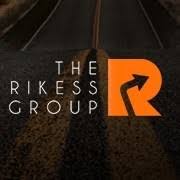On today’s show, we welcome back Mark Rikess, CEO of The Rikess Group, a training and consulting group focused on helping dealers implement a one-price selling method. In this segment, Mark discusses the pressures of recruiting the next generation of talented salespeople, and the changes your dealership can make today, to build a lasting sales team.
Jim Fitzpatrick: Mark Rikess, welcome back to CBT News, so glad to have you.
Mark Rikess: Always a pleasure, Jim.
Jim Fitzpatrick: Sure. You wrote an article in Wards Auto and talked about the recruitment of salespeople and the difficulties in it and some of the things that have to happen in the retail sector, auto retail sector to successfully hire good people for your dealership, factors that prevent successful recruitment of salespeople. Let’s talk about those.
Mark Rikess: Yeah. If you ask a dealer, “What’s your biggest challenge in the variable department?” I’m going to hear that for sure it’s finding younger, talented salespeople and in particular women. So, we do some recruiting. It’s not a big segment of our business for our dealer clients and we will not take one on unless there’s a minimum of three criteria. Number one is a $2,500 salary and that’s a salary against commission, but it’s not a draw. They need to know they’re going to make around $30,000. Number two is a 40 hour work week. We’re just not going to be able to track talented people and try to work in 45 to 50 hours and I know there’s Saturdays. I know there’s Sundays in many markets. We need to adjust and then finally there needs to be at least two weeks of structured training and if there aren’t two weeks of structured training, they want to know how do I get ahead here? How are you going to train me? So, those three factors have to be in place for it to have any success in recruiting salespeople.
Jim Fitzpatrick: Yeah. Let’s go back to the first one there. $2,500. You said it’s a guaranteed salary against commission, but not a draw. So, walk me through how that would work for a dealer.
Mark Rikess: Yeah, so they would advertise certainly that it’s a $30,000 a year minimum with opportunity to make X number of dollars, looking at some of the higher salespeople making the dealership and they really need to structure and maybe it’s some part-time people to balance it out a little bit, but there needs to be that flexibility for the salespeople or they’ll just go somewhere else, especially in an era of almost full employment, we’re competing against all other industries and we have to make our industry more attractive, not less attractive.
Jim Fitzpatrick: Why are dealers so frightened or trying to hold this off to offer a decent salary to their sales department?
Mark Rikess: I think they fight their sales managers a lot and the sales managers look back and say, “Well, I work 60 hours and I earned this money and I sacrificed not seeing my family events and things such as that,” and they just don’t understand that the younger, new millennial generation and women in particular are not going to put up with the more traditional aspects that have accompanied the job in automotive sales and in particular the idea of negotiating, having a negotiating culture, that just stops so many millennials in their tracks. It’s interesting. We saw an OEM did two focus groups with women, two different markets and they showed a video of a typical negotiation and what’s fascinating, women call that arguing. They didn’t call it negotiating. So, then in most markets, that’s what they determined it was. So, millennials and in particular women, don’t understand why with all this great information and consumers doing 10 to 12 hours of research that are they going to take advantage of somebody? The customer’s holding the cards.
Jim Fitzpatrick: Dealers in large part all say, “Yes. We need more females and yes, we’re trying to hire them. They don’t seem to be applying for the jobs. If a good female or somebody that looks good and they happen to be female walks in the showroom floor, we’ll hire them, but we just don’t get those people coming into the dealership that want to be salespeople.” Do you find that to be the case?
Mark Rikess: Yeah and I think it’s an artificial hurdle dealers ask salespeople to jump over and that’s negotiations, that you’re, again, they don’t like it, don’t understand it and we run a 20 Group for our one price dealers and 21% of the sales force in our 20 Group are women and 65% are millennials. So, we’re attracting a younger group of people that identify more with today’s customers and they just don’t have to ask for the order. They still have to sell cars. We like when they have a customer service background, we like when they have some competition, whether it’s debating or playing football, but they show that they’re competitive. That’s a great trait, but when they see the ad or to call the dealership and find out it’s a negotiating dealership, you hear a click.
Jim Fitzpatrick: So, building a future-oriented sales or an oriented sales and management team. What does that look like? Somebody that’s on the team that’s looking down the road that says, “Hey, this is 2019, but where are we going to be in 2025?” What does that showroom look like? And are we hiring those right men and women or the right men and women to find us a way forward?
Mark Rikess: Well, there’s four factors that are roading profitability. I was at three dealer meetings in the last week and every dealer said the first quarter they were down in profitability. So, you look at a declining SAR, interest rates that have arisen and will probably rise some more, escalating expenses in margin compression. We take those four, put them in a stew if you will. You’re going to have less and less profitability and then even a small recession means not profitable. So, now we’re going to be forced to make changes. Younger salespeople, you don’t have to pay as much. That’s saving money. There’s one manager for every 2.5 sales consultants in a dealership today. So, that includes FNI managers. That would include a VDC manager. So, if I’ve got 10 salespeople, I’m going to have four managers. I have 20 salespeople, I’m going to have eight managers.
We can’t run our business in an era of margin compression in particular with these high priced people. So, I think you’re going to see much more online transactions. I think you’re going to see home and office delivery become more the norm or at least aggressively offering that. Dealers will say they offer it, but they don’t aggressively offer that. So, I do think that companies like [inaudible 00:07:20] can do those deliveries for them. I do think it’s going to be much more of a one price environment. Again, to attract. At some point, I got to do something to attract better people and so again, bringing in our expenses to sell a car is going to be critical.
Jim Fitzpatrick: What do you say to the dealer that’s listening to us right now that has 10 dealerships and crushing it? They had the last five years have been phenomenal. They put a boatload of money on the bottom line. Everybody in the dealership seems to be happy. They enjoy a good CSI score and they say, “Jim and Mark, I hear what you’re saying, but I’m good to go right now. I’m not changing a thing.”
Mark Rikess: I think there again, the biggest impediment is probably at the general management level. If I had a GM today with a number one trait I’d look for is for that person to be a change agent and most of them are very comfortable with what got them to their station in life and they’re not about making changes. As those people start to retire and age out. So, we said my GMs are aging out. I hadn’t heard quite that term before and then family members, younger family members are coming into the business. I think at some point again, give their staff to do with the vast majority of customers want and that’s good, simple, easy, transparent and I heard you talk about transparency all the time and it’s just a joke to me because you can’t negotiate and be transparent. What it would sound like is I can sell you this car for $25,500 and if you argue with me for about an hour, I’ll knock off $500, but we got to go through that dance. That would be transparent. That would say, “Here’s how it’s going to work,” but you’re not transparent when you say this is the best deal I can give you and it’s not.
Jim Fitzpatrick: That’s exactly right. I agree. Well Mark Rikus, I want to thank you so much for joining us on CBT News to discuss this very hot topic, although it’s a delicate topic for many dealers to talk about. Whenever we bring up one price selling, we get a ton of responses from our subscribers and our viewers with many differing opinions on the topic and it’s always great to have you on and I love the work that you’re doing. If I was a dealer today, it would be one price selling for sure all the way and I think the dealers that aren’t on that program needs to take a strong hard look at it because I think the future and today’s customer, the combination of those two are will dictate that many dealers will be one price in the future.
Mark Rikess: Yeah. I think so and if any dealers that are watching want to have a webinar, I obviously don’t charge for webinars, just any information, and exploratory. Go to my website, you can contact me and I’d be happy to schedule that for them.
Jim Fitzpatrick: Mark, again, thanks so much for joining us on CBT News. It’s always a pleasure and hopefully, we can have you back soon and talk more about this topic.
Mark Rikess: Thanks for allowing me to share some information.
CBT Automotive Network, the number one most watched network in retail automotive. This has been a JBF Business Media Production.








